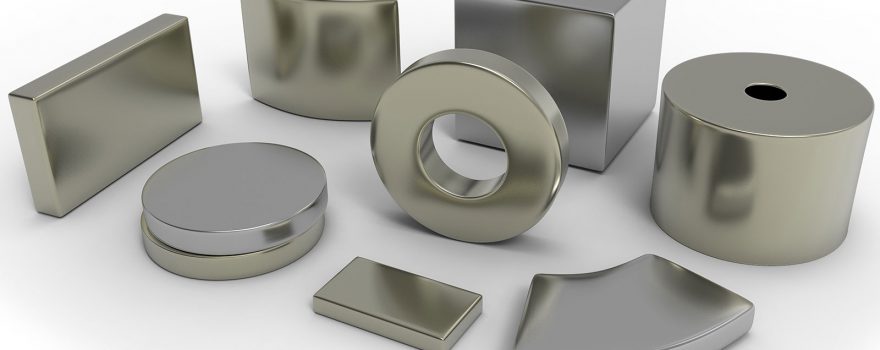
Collectively known as Rare Earth magnets, Neodymium Iron Boron (NdFeB) and Samarium Cobalt (SmCo) magnets are alloys of the Lanthanide group of elements. NdFeB magnets are available in several different grades that span a wide range of properties and application requirements. NdFeB magnets are available in sintered as well as bonded forms.
Temperature effects
Magnetic properties of NdFeB deteriorate rapidly above about 130 degrees Celsius, depending on the grade of material, and the permeance coefficient of the magnet in operation. The higher the permeance coefficient the magnet operates at, the higher the temperature it will withstand. Normally the maximum temperature at which NdFeB magnets can operate is 230 degrees Celsius.
Corrosion resistance
All NdFeB have a poor resistance to corrosion. NdFeB should have some form of protective coating to prevent corrosion, it is not advised to work with uncoated NdFeB magnets. Usually these magnets have a nickel copper coat.
Magnetic strength
Standard readings of magnetic field for a NdFeB magnet start at 2000 Gauss [G] and can reach a maximum of 14000 Gauss, depending on the type of NdFeB magnet. (1 Tesla = 10,000 Gauss).
What metals are attracted to Neodymium magnets?
Any ferromagnetic material can be attracted to Neodymium magnets. The most common ferromagnetic materials are iron, cobalt, nickel, steel manganese, gadolinium and lodestone.
Leave a Reply
